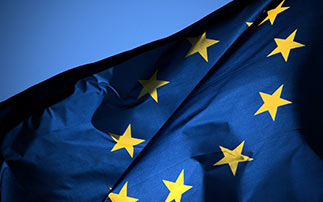The first calls for proposals under the new LIFE programme 2014-2020 will be launched starting from June, 16th 2014.

25 August 2021
+33(0)1 42 54 60 64 | contact@welcomeurope.com
The first calls for proposals under the new LIFE programme 2014-2020 will be launched starting from June, 16th 2014.
LIFE 2014-2020 is the new EU’s funding instrument for the environment and the climate action. Its main objectives are to contribute to the implementation, updating and development of EU environmental and climate action policy and legislation by co-financing different categories of projects and supporting non-profit entities in their activities. Moreover it intends to boost the private sector to invest more in natural capital management projects.
The definitive structure of the programme bids fair to become an excellent instrument in contributing to the shift towards a resource efficient, low-carbon and climate-resilient economy. In fact, it will support a better environmental and climate governance at all levels, also by implementing the 7th Environment Action Programme. LIFE is conceived to fill gaps by addressing environmental issues that are not dealt with by other EU Funds and it provides a platform to discuss easy and cost-efficient ways of implementing EU environmental and climate legislation by both the public and private sectors.
LIFE started in 1992 and up to the present we can count four complete phases of the programme (LIFE I: 1992-1995, LIFE II: 1996-1999, LIFE III: 2000-2006 and LIFE+: 2007-2013). During this period, LIFE has co-financed some 3954 projects across the EU, contributing approximately €3.1 billion to the protection of the environment. Over the next seven years, the new LIFE programme will provide 3,456 million euro, including 2,592 million euro for environment and 864 million euro specifically for climate action.
What are the most innovative elements introduced by the new programme?
Firstly, LIFE introduced for the first time a specific sub-programme for the climate action which will be managed and implemented by the DG CLIMA. Indeed, the framework programme is composed of two sub-programmes. The ‘Environment’ strand of the new programme covers the three following priority areas: environment and resource efficiency; nature and biodiversity; and environmental governance and information. The ‘Climate Action’ strand covers climate change mitigation; climate change adaptation; and climate governance and information.
Secondly, besides traditional projects which mean best-practice/demonstration/pilot/information projects (i.e. similar to those currently funded under LIFE+ Nature, Biodiversity, Environment and Information & Communication), the new funding instrument will allocate grants for other kind of projects. Projects concerned will be:
– Technical assistance projects
– Capacity building projects
– Preparatory projects&nbs
– Integrated projects
The last category of projects is probably the most interesting one as integrated projects aim at implementing strategies on a large territorial coverage and mobilising other private or public funds. These projects should improve the integration of environment and climate aspects into other EU policies. To do this they will need to be inclusive, so they require stakeholders to be involved.
Thirdly, LIFE will allocate operating grants addressed to non profit organisations supporting their administrative costs for projects with an environment or climate issue of Union’s interest. Moreover, funding also will be provided through innovative financial instruments: the Private Financing for Energy Efficiency Instrument (PF4EE) and the Natural Capital Financing Facility (NCFF) which will make available loans and direct/indirect guarantees for about 40 million euro.
These two new financial instruments will be managed by the European Investment Bank. It is also useful to underline that the Commission has delegated the implementation of many components of the LIFE programme to the Executive Agency for Small and Medium-sized Enterprises.
Finally the selection procedure for action grants can be made up of one or two-stage, depending on the project type. So, for integrated projects a two-stage procedure has been foreseen while for other kind of projects the selection is based on a single stage.

25 August 2021

